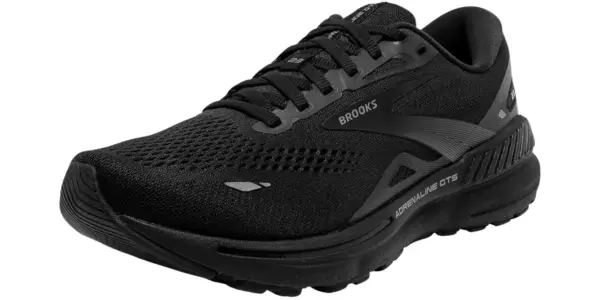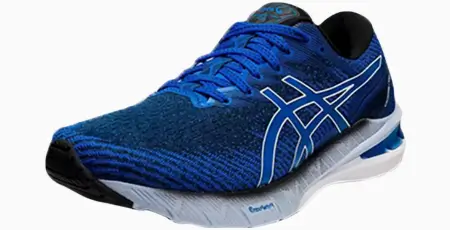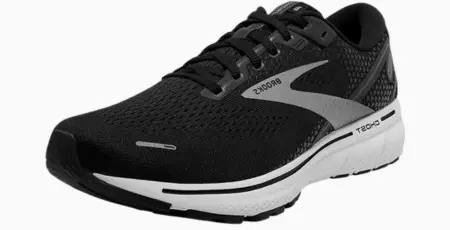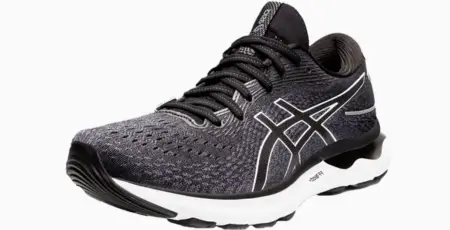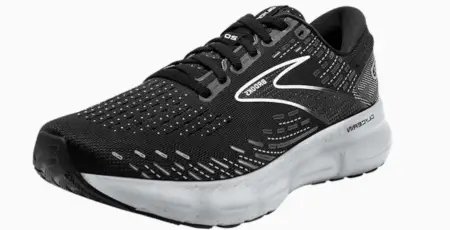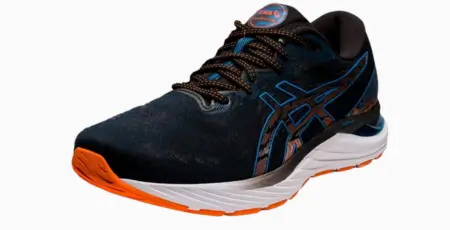Brooks vs Asics Running Shoes Main Differences
Last Updated: January 01, 2025 | Author: Jake Thompson
Just as Achilles had his shield, runners have their shoes—critical gear that can make or break their performance.
I've journeyed through countless miles, my footsteps echoing the eternal question in the runner's mind: which shoe reigns supreme? The debate between Brooks running shoes vs Asics is one I've engaged in more times than I can count, with one brand Brooks with greater popularity and Asics rising as a fashion icon with no compromise on quality.

As a professional writer with an even-keeled passion for the sport, I've scrutinized the craftsmanship of both, and I can attest that the devil truly is in the details. Whether it's the adaptive cushioning of Brooks or the responsive bounce of Asics' GEL, the nuances are worthy of exploration.
In this discussion, I'll unravel those subtleties, comparing my experiences and dissecting the features that could sway your next choice of footwear. Stay with me as we embark on a journey to uncover which brand may best complement your stride, and ultimately, which could be the unsung hero of your running odyssey.
Table of Contents:
- Key Takeaways
- Table: Asics vs Brooks Running Shoes Main Differences
- Pros & Cons
- Brand Overview
- Durability
- Comfort
- Cushioning
- Breathability
- Fit and Support
- Stability
- Feel and Weight
- Our Recommendations
- Final Verdict
- Frequently Asked Questions
Key Takeaways
- - Both Asics and Brooks offer durable running shoes, but Brooks shoes like the Ghost 14 have shown exceptional durability even after running 1,650 kilometers.
- - Brooks shoes have a wider toe box and are a good option for runners with wide feet or specific foot conditions, while ASICS shoes tend to run narrow and provide a snugger fit with a narrow heel cup and external heel clutch for support.
- - Brooks uses different foam materials for specific purposes, while ASICS shoes feature GEL technology for cushioning and shock absorption, as well as Flytefoam technology for improved energy return.
Table: Asics vs Brooks Running Shoes Main Differences
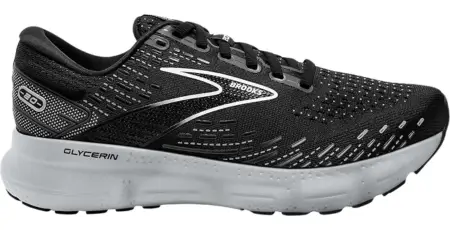
|
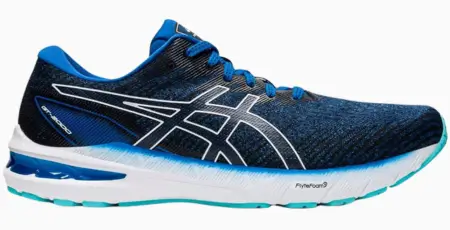
|
|
|---|---|---|
| Criteria | Brooks | Asics |
| Brand Origin | American | Japanese |
| Founded | 1914 | 1949 |
| Specialty | Running Shoes | Running Shoes, General Athletic |
| Cushioning | Known for softer, plush cushioning | Known for responsive, firm cushioning |
| Technology | DNA Loft, BioMoGo DNA, GuideRails | GEL technology, FlyteFoam, Trusstic System |
| Fit | Generally wider toe box | Often snugger fit, especially in the midfoot area |
| Durability | High, with an emphasis on lasting comfort | High, with a focus on maintaining performance |
| Popular Models | Ghost, Adrenaline GTS, Glycerin | Gel-Kayak, Gel-Nimbus, Gel-Cumulus |
Pros & Cons
Brooks
Pros:- - Superior cushioning for long-distance runners.
- - Durability for extended mileage.
- - Excellent stability, ideal for pronation issues.
- - Wide variety of options, including trail running shoes.
- - Higher price point.
- - Some models are heavier, not suitable for speed-focused runners.
Asics
Pros:- - Comfortable fit right out of the box.
- - Gel cushioning technology for shock absorption.
- - Stylish with a wide range of styles and colors.
- - Versatile for various sports and activities.
- - Potential durability issues compared to other brands.
- - Some models have a narrow fit.
Brand Overview
When comparing Brooks and ASICS, it's essential to consider the unique brand history and reputation that each brings to the running community, underpinned by their commitment to innovation and quality performance footwear. As two of the most popular running shoe brands, both have carved out distinct identities and loyal followings.
Brooks, which began its journey in 1914, honed in on running shoes in the 1970s, becoming a specialized running shoe brand. Their approach focuses on biomechanics, offering shoes that accommodate the runner's gait rather than attempting to correct it. Brooks running shoes are lauded for their roomier fit, particularly in the toe box, making them a go-to for runners who prioritize space and comfort.
For runners dealing with Achilles tendonitis, the right fit is crucial. Learn more about the ideal choices in our articles on Best Shoes for Achilles Tendonitis, where we explore how Brooks' wider toe box can be beneficial.
On the other hand, ASICS, originating as Onitsuka Co in 1949, has gained fame for its GEL technology, a feature that provides exceptional shock absorption and is a hallmark of Asics running shoes. The shoe brand typically delivers a snugger fit, especially in the heel, catering to those who prefer a more controlled run.
The differences between Brooks and Asics can be subtle yet significant. They hinge on the individual runner's needs, whether it's a preference for a cushioned ride with room to move or a tighter fit with responsive gel cushioning. Both brands continue to innovate, ensuring that every runner can find their perfect match.
Durability
The lifespan of a running shoe is a critical factor for runners, and in the comparison between Brooks shoes vs Asics, both brands offer notable durability. When evaluating the longevity of these shoes, one must consider the midsole's role in shock absorption and energy return, two key elements that influence durability.
Brooks running shoes are engineered with a variety of midsole technologies, such as the DNA LOFT and BioMoGo DNA, which provide a balance between softness and responsiveness. This balance is crucial, as a midsole that's too soft may compromise durability, while one that's too hard may reduce shock absorption.
Asics shoes, on the other hand, feature their GEL technology and FlyteFoam, which are renowned for their shock-absorbing properties and contributing to the shoe's lifespan. The difference between Brooks and Asics in this regard often lies in the construction and materials of the midsole, where Asics tends to emphasize gel-infused cushioning for longevity.
Comfort
When it comes to comfort in running shoes, cushioning and breathability are key factors that can't be overlooked.
I've found that Brooks often utilizes varying foam technologies, offering a tailored cushioning experience. On the other hand, ASICS relies on its GEL technology to provide consistent shock-absorbing comfort.
Moreover, the breathability of a shoe contributes significantly to its overall comfort. This is something both brands address with their engineered mesh uppers. However, the execution differs, impacting the in-shoe climate and comfort during extended wear.
Cushioning
One's experience of cushioning in running shoes is paramount, as it directly influences comfort and performance during runs. When I'm comparing shoe brands, I'm delving into the heart of their cushioning technologies.
Brooks often employs its proprietary DNA Loft and BioMoGo DNA foams. These materials are designed to adapt to each stride, providing a personalized cushion that's both sustainable and responsive.
Asics, on the other hand, is synonymous with its Gel technology, notably found in models like the Gel Nimbus Lite. Their FlyteFoam and EVA foam work in tandem to deliver a plush ride with ample energy return.
- - Brooks' cushioning: Adaptable DNA Loft and BioMoGo DNA
- - Asics' cushioning: Shock-absorbing Gel technology with FlyteFoam
- - Comparison focus: Responsiveness, sustainability, and plush comfort
Breathability
In assessing the breathability of running shoes, it's essential to consider how effectively the material permits airflow to keep feet cool and dry during long runs.
Brooks running shoes feature engineered mesh and moisture-wicking materials to enhance ventilation. Similarly, Asics running shoes incorporate breathable fabrics and their trademarked mesh solutions to optimize airflow.
When comparing the shoes in terms of breathability, it's clear that both brands strive to provide a comfortable running experience. However, the exact degree of breathability can vary among different models.
Fit and Support
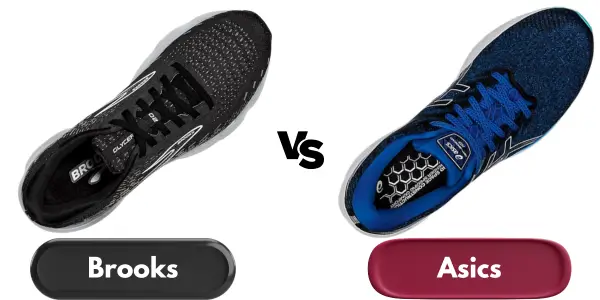
How well a running shoe fits and supports your foot can significantly impact your overall running experience and performance. As I analyze both shoe brands, I consider how each brand approaches fit and support, since these factors are vital for runners of all levels.
Brooks is often recognized for its more generous toe box, which is great for a runner who needs a bit more room. This doesn't mean they skimp on support; on the contrary, their stability shoes come with GuideRails technology, providing targeted support without being intrusive. This means you get a good mix of freedom and structure.
Asics tends to offer a snugger, narrower fit, particularly in the heel and midfoot area, which can be beneficial for runners who need extra support and stability. They've modeled with a firm heel counter and a Duomax midsole system, enhancing their stability shoe offerings.
Here's a quick rundown:
- - Brooks:
- Wider toe box for a less constricted fit.
- GuideRails technology in their stability shoes for focused support.
- Tailored for a variety of arch types with ample cushioning.
- - Asics:
- Snugger fit, especially in the heel, for a secure feel.
- Duomax midsole for enhanced support and stability.
- Gel technology for shock absorption, complementing the fit of the shoe.
Both brands provide different experiences, and it's crucial to consider these aspects when determining the best shoe for your needs.
Stability
While considering the fit and support, it's also essential to examine how each brand's technology contributes to the stability of its running shoes. Stability in running shoes is crucial for controlling foot movement, especially for those with overpronation, where the foot rolls inward excessively.
Brooks employs its GuideRails system, notably in the Brooks Adrenaline GTS, which acts like bumpers on a bowling alley, ensuring your feet stay in a natural alignment, without over-correcting and causing discomfort. Asics, on the other hand, uses its GEL technology and FlyteFoam technology to create a stable and cushioned ride. The Asics Gel technology is particularly effective in absorbing shock and reducing the impact on the foot during the landing phase.
When considering the best stability shoes, both Brooks and Asics offer options that cater to different needs. Brooks tends to focus on holistic support that adapts to your stride, while Asics provides targeted support, especially with dual-density foam that improves arch support and counters overpronation.
Here's a table summarizing their stability features:
| Feature | Brooks Adrenaline GTS | Asics with FlyteFoam & GEL |
|---|---|---|
| Arch Support | GuideRails system | Duomax midsole |
| Technology | Holistic support | FlyteFoam & GEL for shock absorption |
| Best For | Overpronation without over-correction | Overpronation with enhanced cushioning |
Both brands have engineered their technologies to ensure runners have the support they need for a stable and responsive ride.
Feel and Weight
The tactile experience and overall mass of a running shoe are pivotal factors that contribute to a runner's comfort and performance, with Brooks typically offering a lighter, more responsive feel, whereas ASICS provides a denser cushioning due to its GEL technology. When I'm out for a run, I notice these differences acutely. Brooks shoes feature their proprietary DNA midsole, which adapts to my stride, providing a dynamic and comfortable on-the-feet experience. In contrast, ASICS's gel offers cushioned support that absorbs impact, especially beneficial for those who need more support.
Analyzing the two, it's clear that the fit and comfort of the shoes are shaped by their unique technologies. For instance, the Brooks DNA responds to varying forces and speeds, while ASICS GEL technology creates a plush, protective feel. Here's a breakdown:
- - Brooks Running Shoes: Lighter weight and adaptable cushioning with the Brooks DNA for a personalized ride.
- - ASICS Running Shoes: Gel technology ensures a soft landing and stable support, ideal for runners who prefer denser cushioning.
- - Fit and Comfort: Both brands provide a secure fit, but the feel differs; Brooks is more about responsiveness, and ASICS focuses on a snug, cushioned fit.
In the Asics running shoes vs Brooks running debate, it comes down to personal preference on whether you prioritize a lightweight shoe or one with substantial gel cushioning.
Our Recommendations
Asics vs Brooks for Walking: Brooks Adrenaline vs Asics Kayano
Adrenaline GTS 23
The Brooks Adrenaline GTS 23, with its DNA LOFT v2 Cushioning and GuideRails Support, offers a perfect blend of comfort and stability for walking. Its durable, flexible outsole and breathable mesh upper make it ideal for various terrains and weather conditions, ensuring a secure and supportive stride for walkers of all levels
For a deeper dive into Brooks' stability features, don't miss our comparison of Brooks Adrenaline vs Glycerin, highlighting how each model supports different running styles.
Gel-Kayano 29
The Asics Gel-Kayano 29 is an excellent choice for walking, particularly for those looking for a shoe that offers both comfort and stability. Its key features make it well-suited for long periods of walking or standing.
Brooks vs Asics for Plantar Fasciitis: Brooks Ghost vs Asics Nimbus
Ghost 14
Ghost 14 by Brooks stands out as the ideal shoe for Plantar Fasciitis sufferers. Its exceptional cushioning, support, and arch stability provide relief from painful symptoms. Engineered with the latest technology, these shoes offer maximum comfort and reduce strain.
Gel-Nimbus 24
The Gel-Nimbus 24 is highly recommended for individuals suffering from Plantar Fasciitis due to its exceptional cushioning and support. It features advanced technology, such as GEL cushioning and an Ortholite X-40 sock liner, which effectively alleviates pressure on the plantar fascia while providing superior comfort.
Explore the nuanced differences in feel and weight between these popular models in our head-to-head comparison of Brooks Ghost vs Asics Nimbus.
Brooks vs Asics for Running: Brooks Glycerin vs Asics Gel
Glycerin 20
The Glycerin 20 running shoes offer unparalleled comfort and support, featuring advanced cushioning technology for optimal shock absorption. Their lightweight design enhances agility, while the durable construction ensures long-lasting performance. Ideal for both casual joggers and serious runners, they provide an exceptional balance of flexibility, stability, and responsiveness.
Cumulus 23
The ASICS Gel-Cumulus 23 is an exceptional choice for runners, offering a perfect blend of comfort, durability, and support. Its advanced cushioning system provides excellent shock absorption, while the engineered mesh upper ensures breathability. Ideal for long distances, it's a top pick for both amateur and seasoned runners.
Final Verdict
In the ongoing Asics vs Brooks debate, the choice between these two esteemed running shoe brands hinges on individual preferences and specific requirements. Both offer durable options, but Brooks shines in terms of exceptional longevity. Brooks also caters to those favoring a roomier fit and adaptive cushioning, thanks to its DNA Loft and BioMoGo DNA technologies.
In contrast, Asics is renowned for its responsive Gel cushioning, making it an excellent choice for those seeking a snug, secure fit. The decision ultimately comes down to factors such as fit, cushioning preference, and stability needs, emphasizing the importance of trying both brands' models to find the perfect match for one's running style and comfort.
Frequently Asked Questions
1. Brooks or Asics for trail running?
Comparing Brooks vs Asics for trail running, Brooks often integrates a ballistic rock shield, catering to rough terrains, while Asics provides excellent grip and stability. Many runners choose between Brooks and Asics based on these key differences, making it a personal choice.
2. What's the midsole material in Asics running shoes?
Asics uses advanced materials like FlyteFoam in their midsoles, offering a blend of comfort and durability. This technology ensures that Asics shoes provide a balance of cushioning and responsiveness, essential for runners clocking 300 to 500 miles in their shoes.
3. Which shoe brand is your go-to for road running?
For daily running on roads, many prefer Cumulus 23 for its innovative cushioning, while others like Brooks, especially models like Brooks Glycerin 20, for their consistent performance. The best Brooks or Asics shoes for road running depend on individual comfort and foot mechanics.
4. What factors determine the best running shoe for an individual?
The best running shoe for an individual depends on factors like foot shape, gait pattern, and running terrain. Brooks and Asics both offer options with features like carbon fiber plates or gel cushioning to help cater to these specific needs.
5. How do fit and comfort impact the choice between Brooks and Asics running shoes?
When choosing between Brooks and Asics, fit and comfort are paramount. Brooks takes an approach focused on overall foot support, while Asics shoes may offer a snugger fit. Running store assessments can aid runners in finding which brand feels more comfortable on the feet.
Share this:

